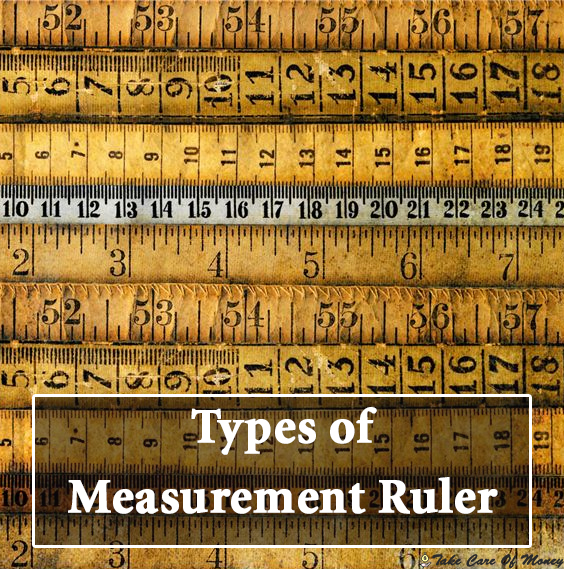Table of Contents
A ruler is an instrument used to measure distances, degrees and determine straight lines. There are many different types of measurement ruler available in different shapes, sizes and materials.
These ruler are used in various occupations and fields of study, such as geometry, the printing, in drawing technical, in construction and in engineering.
Any of these ruler of measurement is obtained in businesses or warehouses that specialize in things related to plastic arts and drawing. Next, you can learn about the different types of measurement ruler.
The desktop rule
Is the most common type best known ruler and the ruler of desktop are generally used to measure, draw lines straight and apart, also serve as guides when cut with knives.
They have measurement marks along each side; They are generally marked in inches on one side and in centimeters in the other. Standard desktop ruler are 12 inches or 30 centimeters long.
They can be made of different materials, such as: Wood, plastic or metal, and are available in transparent varieties and opaque shades.
Line indicators
Line indicators are ruler used by printers that resemble desktop ruler, are marked in dots, pikes, agates and inches. Sometimes centimeters are also included.
The indicators are made with stainless steel and have engraved marks. They are usually 72 pikes or 11, 952 inches long. Besides, there is also the rigid rule used to prevent any kind of measurement errors.
The transporter
This is used to measure angles and circles, the conveyors are transparent, circular or semicircular ruler. They come in two varieties: 180 degrees equal to a semicircle or 360 degrees that is a complete circle.
To measure an angle, the conveyors have two sets of units of degrees of operation along the curve, which go in opposite directions. These grade units generally mark in half-degree increments.
On the other hand, the conveyors are available in three different sizes: The 6-inch or 15-centimeter conveyor, the 8-inch or 20-centimeter conveyor and the 10-inch or 25-centimeter long conveyor.
The drafting triangles
Drafting triangles, usually made of transparent plastic, are used to measure angles and draw vertical or inclined lines.
The two types available, the triangle of 45 degrees and the triangle 30 / 60 degrees, are appointed by the size of its angles; acute or small.
The 45 degree triangle has an angle of 90 degrees and two angles of 45 degrees; Triangle 30 / 60 degrees has a 90, a 30 and a 60 degrees. Drafting triangles are available in sizes ranging from 4 to 18 inches equal to 10 to 45 centimeters long.
Adjustable triangle
The combination between the functions of the conveyors and the drafting triangles are the adjustable triangles that can be adjusted and locked at any angle.
The degrees of an angle, can mark in increments of half degree, are in the part of the conveyor and locked in position. The triangle portion can be used to draw the selected angle.
The ruler at triangular scales
The triangular scale ruler are devices that are triangular measuring scales, are used by architects, engineers, builders and designers.
They are marked with a range of scales or proportions, which are used for manufacturing or small scale measurement as blueprints or plans. Remember that a cartoonist or architect can use the different types of paper known.
In the United States, the proportions of these ruler are usually marked as inches. Unlike in other parts of the planet, relationships are marked in metric terms, such as millimeters, centimeters and meters. They have 10 to 12 scales available and are 12 inches equal to 30 cm long.
The scales used in an architectural plan
A professional architect must have all the knowledge about the scales used in an architectural plan to carry out the works that he has to create. Remember that a well-made construction can last for decades.
Therefore, these experts in the field know how to transform a design from large scales to small scales within a plane. Keep in mind, that the scales are divided into 3 types.
The first of these is the reduction scale, which, as its name says, reduces all measures. The other is the scale of enlargement, which expands all measures and finally, the natural scale or 1 to 1. This works with the same measures of drawing in reality.
